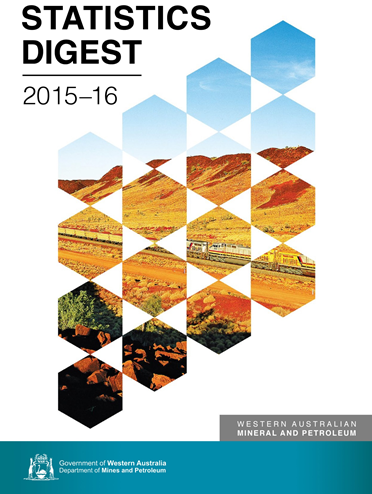Changes have created a more reader-friendly look at the performance of WA’s resources sector in 2015-16
| Date: | Wednesday, 09 November 2016 |
|---|
A new and more reader-friendly Western Australian Mineral and Petroleum Statistics Digest 2015-16 is now out.

The 61st edition of the digest has been restructured to give a broader overview of the activity and performance of Western Australia’s resources sector while still providing more detailed commentary around the State’s various commodities.
“We added some data and discussion around exploration and have been improving the discussion around investment and employment activity within the State,” Department of Mines and Petroleum (DMP) Principal Policy Oficer Hailey Adams said.
“Basically we’ve attempted to add a greater level of analysis and commentary to the digest.
“The stats digest, as it is affectionately known by the talented people who put it together, quietly pushed past a significant milestone last year, reaching its 60th edition, however DMP’s statistical role reaches as far back as 1896.”
In terms of DMP’s overall statistical function, Ms Adams said that the most noticeable change was the whittling down of 16 resources data files to just three.
“Users can select the data they are after in either calendar or financial year and we have a number of tables and graphs that respond dynamically, based on what the user selects,” she said.
“Overall, they have become a lot more user friendly and readers have access to a larger range of historical data than they did in the past.”
The three resource data files are:
- Major commodities: this file contains information about the scale and scope of Western Australia’s mineral and petroleum industry, as well as detailed information about the State’s major commodities, such as export value and sales value in comparison to other jurisdictions.
- Economic indicators: information about how the State’s mineral and petroleum industry contributes to the economy through exploration and investment, royalty receipts and employment.
- Spatial and regional: information about mineral and petroleum tenements and how the value of mineral and petroleum sales is distributed across the State.
Following the recent changes, DMP is seeking feedback from the public about how they interact with the digest and the resources data files.
Introducing this year’s digest, DMP Acting Director General Dr Tim Griffin identified highlights of 2015-16.
“In December 2015, Hancock Prospecting’s Roy Hill project achieved its first ore shipment and in March 2016, the US$54 billion Chevron-operated Gorgon project made its first LNG shipment,” he said.
“Gorgon is the largest single resources project in Australian history and one of the largest natural gas projects in the world.
“These projects will drive economic benefits for Western Australians well into the future.”
Dr Griffin said that Western Australia’s gold sector had remained strong, leading the way in exploration and growth.
“This can be largely attributed to the commodity’s monetary and metal value in times of economic uncertainty,” he said.
“The mineral and petroleum industry has also begun a renewed focus on innovation, as companies look to technological solutions to reduce costs and maintain the safety of operations.
“The use of driverless trucks, hosting of ‘hackathons’ to foster open-source collaboration and remote-controlled devices for inspection activities are examples of innovation in practice.
“As always, a publication such as this requires input from a range of organisations and I would like to thank the Department of Industry Innovation and Science, the Australian Bureau of Statistics and the Western Australian Department of Treasury for their contributions.”
A copy of digest can be obtained from the DMP website. For more information about the digest, contact Hailey Adams on 9222 0416.

